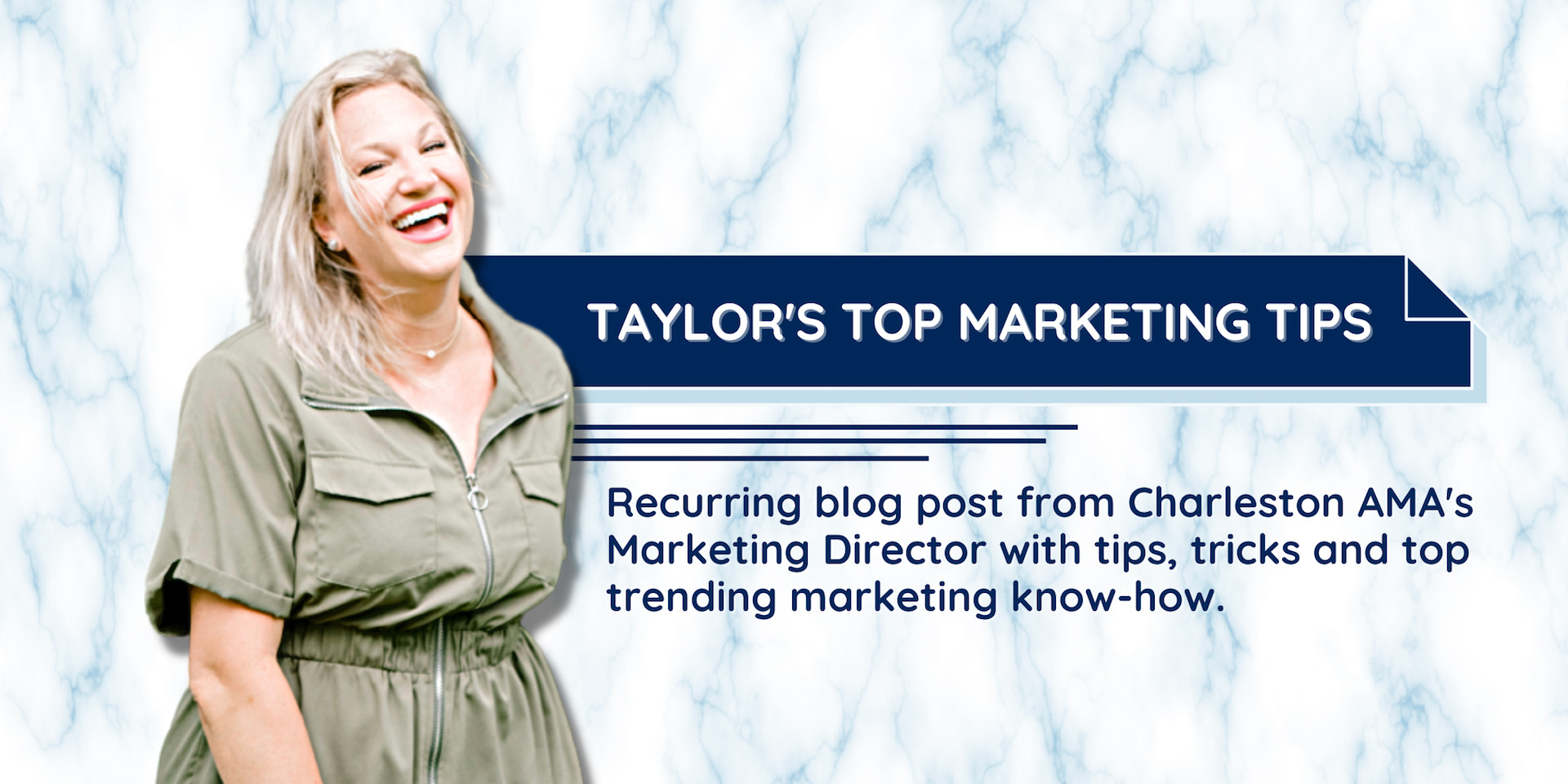
Taylors-Marketing-Tips-CAMA-Blog
This time I’m talking vocab to get you ready for big trends to hit the industry come 2023. Let’s jump in…
- Agile Marketing: An approach inspired by the Agile methodology. It’s a way of working that involves rapid iterations rather than one big project. Agile marketing emphasizes real-time collaboration (over silos and hierarchy) and is designed so that marketers can respond more easily to change.
- “Blanding”: The cross-market phenomenon of brands adopting similar minimalist aesthetic cues. Ruled by the dictum “less is more,” blanding is embodied by sans serif fonts, clean lines, limited color palette and overall simplification. Blanding is a visual style
that’s controlled, ahistorical and flat. Blands by definition look the same. The style can be seen across all sectors, and major companies are rebranding to fit the trend. Blanding removes associations, attempting neutrality. As simple and streamlined as possible, there’s nothing that could alienate consumers now or in the future. This will specifically apply to UX design working to make websites free of intrusive advertising and popups. - Conversational Marketing: Instead of directing people to lead capture forms and waiting for a response, conversational marketing uses targeted messaging and AI automation to engage with people when they’re on your website. This digital marketing trend employs intelligent chatbots with machine learning and natural language processing (NLP), allowing customers to have a two-way conversation with a brand. Shifting from an asynchronous way of marketing to real-time conversations presents a major learning curve as conversational marketing grows in 2023.
- Internet of Things (IoT): This term describes a network of “things” that are connected through sensors and software for the purpose of connecting and sharing data with each other over the internet. According to Cisco, 500 billion devices are expected to be connected to the internet by 2030. This means marketers should start thinking about how to incorporate IoT and artificial intelligence into their programs to maintain omnichannel marketing across channels their potential buyers will be using.
- “Scrollytelling”: A term first coined to describe online long-form stories characterized by audio, video and animation effects triggered by simply scrolling the page. The scrollytelling format represented a departure from basic stories containing little or no multimedia, and also from interactive stories that were complex to navigate. One of the first examples of the style to gain widespread attention was Snow Fall: The Avalanche at Tunnel Creek, published by The New York Times. The simplicity of the scroll-based interaction meant that readers didn’t have to second-guess what to press, click, or swipe in order to see the full story. The scrollytelling format also provided novel opportunities for position-triggered multimedia events, such as video playing, animation, and image transitions. This enabled a dynamic interplay of text, imagery, and sound that gave the story an engaging rhythm and provided elements of unexpected surprise as components came to life.
And there you have it! I hope you’re feeling more ITK and a bit more prepared for the marketing realm in 2023!






